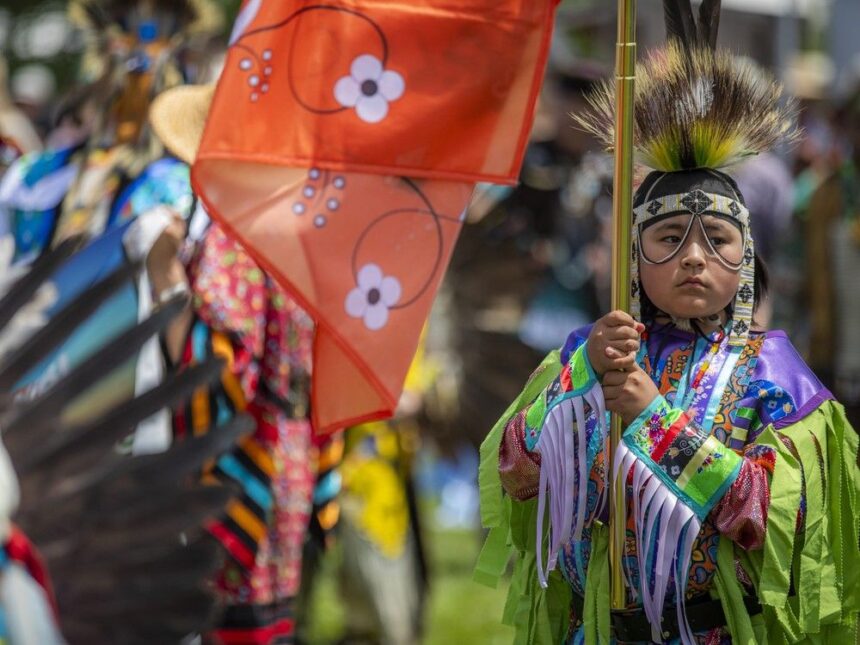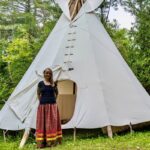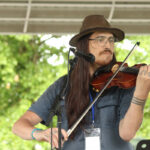The morning light spills over Vincent Massey Park as I arrive, catching glimpses of feathers and ribbons dancing in the June breeze. It’s the opening day of Ottawa’s Summer Solstice Indigenous Festival, and already the grounds hum with energy that feels both ancient and immediate.
“This isn’t just a festival—it’s a homecoming,” explains Trina Mather-Simard, Executive Director of Indigenous Experiences, as we walk past vendors setting up their stalls. Her voice carries pride as she gestures toward the main stage. “Twenty-five years ago, we started with just a small gathering. Now look at us.”
The 2024 Summer Solstice Indigenous Festival, running June 20-23, has transformed into one of Canada’s capital region’s largest celebrations of Indigenous culture, drawing thousands to honor traditions that long predate colonial borders. This year’s programming balances entertainment with education, offering visitors immersion in First Nations, Métis, and Inuit cultures through performance, food, art, and ceremony.
Near the entrance, I watch as Jordan David, an Algonquin artist from Kitigan Zibi, carefully arranges his woodland-style paintings. “People come looking for dreamcatchers and find contemporary Indigenous art instead,” he laughs. “That’s the point—we’re not static. Our traditions evolve while keeping their roots.”
The festival coincides with National Indigenous Peoples Day on June 21st, a date of astronomical significance chosen to align with the summer solstice—the longest day of the year and a time many Indigenous communities have traditionally gathered to celebrate.
At the culinary pavilion, Chef Shawn Adler prepares traditional ingredients with contemporary techniques. The aroma of cedar-planked salmon and wild rice fills the air as he demonstrates cooking methods to an attentive crowd. “Food connects us to territory,” he explains while sprinkling hand-harvested seasonings. “When you taste these flavors, you’re experiencing our relationship with the land.”
Statistics Canada reports that Ottawa-Gatineau is home to over 40,000 people who identify as Indigenous, yet many residents have limited understanding of their cultures. The festival serves as a bridge, according to Mather-Simard. “This isn’t just for Indigenous people to celebrate—it’s for everyone to learn and connect.”
The educational component is intentional. Between performances by throat singers and hoop dancers, workshops on language preservation and treaty relationships create spaces for meaningful dialogue. Children gather in the family area where elders share stories that have traveled through generations, their young faces rapt with attention.
“What makes this festival unique is how it balances celebration with education,” notes Gabrielle Fayant, co-founder of Assembly of Seven Generations, a youth-led organization. “Young people can come here and feel proud of who they are while non-Indigenous visitors learn about our resilience and contributions.”
The marketplace features over 40 Indigenous artisans selling everything from beadwork to digital art. Many vendors participate in the Indigenous Marketplace Accelerator Program, developed in partnership with Pow Wow Pitch, which provides business development support to Indigenous entrepreneurs.
When I return in the evening, the festival has transformed. Firelight illuminates faces as the main stage welcomes Silla + Rise, who blend traditional Inuit throat singing with electronic beats. The crowd—diverse in age and background—moves together under stars beginning to appear in the darkening sky.
“Our ancestors gathered at this time of year to celebrate the sun’s journey,” Elder Annie Smith St-Georges tells me as we watch young dancers prepare for their performance. “Now we gather not just to honor the past, but to show that we are still here, still creating, still teaching.”
According to the National Centre for Truth and Reconciliation, cultural revitalization is essential to healing from colonial policies designed to eradicate Indigenous identities. Festivals like this one play a crucial role in that process, providing visibility and economic opportunities while educating the broader public.
On my way out, I pass a circle of drums where players of all ages have gathered spontaneously. The beat reverberates through the ground, up through my feet, into my chest. An elder nods at me to join, and though I hesitate, knowing my rhythm might falter, his encouraging smile draws me in.
“That’s what this festival does,” Mather-Simard had told me earlier. “It invites everyone to participate in understanding—not just as observers, but as community members with shared responsibilities to this land.”
As the summer sun lingers long into the evening, Ottawa’s Summer Solstice Indigenous Festival demonstrates that celebration can be a powerful form of education, connection, and ultimately, reconciliation. In a city built on unceded Algonquin territory, these four days remind us that Indigenous cultures aren’t relics of the past, but living traditions that continue to evolve, adapt, and thrive.
The drums continue long after I leave, their rhythm following me home like a heartbeat—persistent, alive, and impossible to ignore.






